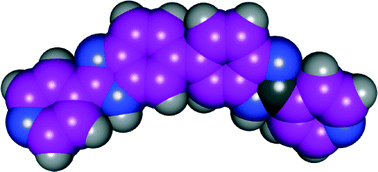The discovery of a novel antibiotic for the treatment of Clostridium difficile infections: a story of an effective academic–industrial partnership
Abstract
Academic drug discovery is playing an increasingly important role in the identification of new therapies for a wide range of diseases. There is no one model that guarantees success. We describe here a drug discovery story where chance, the ability to capitalise on chance, and the assembling of a range of expertise, have all played important roles in the discovery and subsequent development of an antibiotic chemotype based on the bis-benzimidazole scaffold, with potency against a number of current therapeutically challenging diseases. One compound in this class, SMT19969, has recently entered Phase 2 human clinical trials for the treatment of Clostridium difficile infections.


 Please wait while we load your content...
Please wait while we load your content...